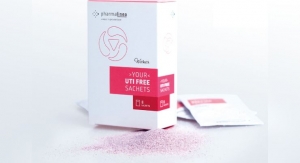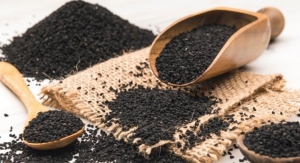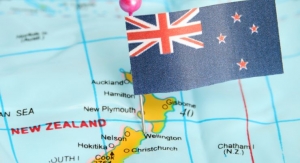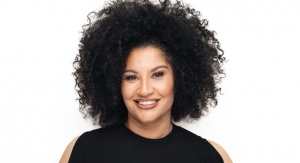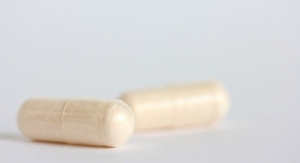David Mark11.01.08
Traditional Arabic or Islamic Medicine (TAM or TAIM) is far less well-known in the U.S. compared to other "traditional," i.e., non-Western medical practices such as traditional Chinese medicine or traditional Indian (Ayurvedic or Unani) medicine. Per the World Health Organization (WHO), "Traditional medicine refers to health practices, approaches, knowledge and beliefs incorporating plant-, animal- and mineral-based medicines, spiritual therapies, manual techniques, and exercises applied singularly or in combination to treat, diagnose and prevent illnesses or maintain well-being."
Much of the roots of TAM stem from the Alexandrian conquests and the subsequent hundreds of years of rule by Greek colonists in the Hellenistic States, stretching from what is now Egypt to the western edges of what is now India. The medical works of Hippocrates and Galen laid the foundations for medical practice in the Middle East. Greek-derived medicine survived the Roman conquests, and was later formalized by the translations of Greek texts into Arabic in the 8th century A.D., during the early part of the Abbasid Caliphate. Interestingly, the major Ayurvedic texts were being translated into Arabic at the same time-Ayurvedic practices were also melded into the Arabic medicine body of knowledge.
Advances in medicine during the Abbasid Caliphate (8th to 13th centuries) included the establishment of hospitals, surgical methods, medical encyclopedias, medical schools and the standardization of botanical preparations. The western reaches of the Islamic empire reached into what is now Spain, with centers of learning in Cordoba and Granada. Plants indigenous to this region were added to the body of knowledge. Toward the end of the 12th century, translations from Arabic to Latin of such works as the Canon of Medicine (Ibn Sina, also known as Avicenna; 980-1037) and the Comprehensive Book on Medicine (al-Razi, also known as Rhazes; 865-923) laid the foundation for the development of "Western" medicine in Europe.
Current use of TAM varies widely from country to country across the Middle East, and within countries by socio-economic status and education. Ethnobotanists have identified 200 to 300 plant-derived products in current use across the Middle East, with a high degree of overlap with the Materia Medica identified in Arabic texts from the Middle Ages. Some of the core medicinal plants common across the Middle East include:aloe, anise, black seed (see side bar, next page), cardamom, chamomile, cherry, cinnamon, clove, coriander, cress, cumin, fennel, fenugreek, flax, frankincense (lubban), galingale, ginger, greek sage, henna, Indian frankincense, laurel, licorice, mastic, mint, mustard, nutmeg, olive, parsley, pepper, pimento, rosemary, saffron, senna, sumac, syrian rue, turmeric and wormwood.
More than a third of these plants are also described in the European Scientific Cooperative of Phytotherapy (ESCOP) Monographs. As an example of how one of these might show up in the modern-day inventory of dietary supplement ingredients, Indian frankincense (Boswellia serrata) contains various boswellic acids, which can be concentrated in a Boswellia extract. Boswellic acids have been shown to inhibit the 5-lipoxygenase enzyme in the metabolic pathway leading to inflammatory leukotrienes. In clinical trials, Boswellia extracts have demonstrated promising effects in osteoarthritis, colitis and asthma.
The 21st century future for TAM is not as strong as it is for traditional Indian or Chinese medicine. A recent visit to Damascus and Aleppo found herb-selling traditional Arab pharmacies in the souks, while in the suburbs there were cars double-parked in front of modern pharmacies where consumers raced in to buy glucosamine, ginkgo and other non-indigenous complementary and alternative medicines.
To remain vibrant, traditional medicine requires schools to continue to graduate practitioners, agreed upon definitions for botanical materials, stable sources of those plants and a population of consumers seeking traditional treatments. Given the current world dominance of "Western" medicine, advocates of traditional medicine may also try to apply evidence-based research methods to traditional practices. This typically involves identification of the active compounds in plant extracts, followed by evaluation either through in vitro, animal or human studies. This modern-approach research could be conducted in situ, at local universities and pharmaceutical company research facilities. Students from the region who have moved to other countries to complete their advanced education could also carry this research out. These students could stay on to conduct re�search there on herbs they were familiar with from childhood.
A survey of Arab practitioners in the Middle Eastern region provides evidence that TAM does not have this forward-looking momentum. Most of the 31 practitioners (average age 60 years) considered to be knowledgeable in their trade "inherited" the practice from their father or a male relative or learned it as an apprentice. Study authors note that the number of practitioners they were able to locate was fewer than reported in earlier surveys. There was limited exchange of information among healers, and no systemic instruction of the next generation of healers. The healers either sourced their herbs from the wild (limiting them to what grew locally) and/or purchased herbal products from traditional Arab pharmacies. On average, each healer used only 22 botanical products in their practice-far fewer than the 200-300 that ethnobiologists have identified as still in use across the Middle East. On the bright side, there are isolated attempts to establish re�search/teaching centers, including gardens for medicinal plants.
References & Resources Furnished Upon Request.
TAM's Deep Roots
Much of the roots of TAM stem from the Alexandrian conquests and the subsequent hundreds of years of rule by Greek colonists in the Hellenistic States, stretching from what is now Egypt to the western edges of what is now India. The medical works of Hippocrates and Galen laid the foundations for medical practice in the Middle East. Greek-derived medicine survived the Roman conquests, and was later formalized by the translations of Greek texts into Arabic in the 8th century A.D., during the early part of the Abbasid Caliphate. Interestingly, the major Ayurvedic texts were being translated into Arabic at the same time-Ayurvedic practices were also melded into the Arabic medicine body of knowledge.
Advances in medicine during the Abbasid Caliphate (8th to 13th centuries) included the establishment of hospitals, surgical methods, medical encyclopedias, medical schools and the standardization of botanical preparations. The western reaches of the Islamic empire reached into what is now Spain, with centers of learning in Cordoba and Granada. Plants indigenous to this region were added to the body of knowledge. Toward the end of the 12th century, translations from Arabic to Latin of such works as the Canon of Medicine (Ibn Sina, also known as Avicenna; 980-1037) and the Comprehensive Book on Medicine (al-Razi, also known as Rhazes; 865-923) laid the foundation for the development of "Western" medicine in Europe.
TAM Today
Current use of TAM varies widely from country to country across the Middle East, and within countries by socio-economic status and education. Ethnobotanists have identified 200 to 300 plant-derived products in current use across the Middle East, with a high degree of overlap with the Materia Medica identified in Arabic texts from the Middle Ages. Some of the core medicinal plants common across the Middle East include:aloe, anise, black seed (see side bar, next page), cardamom, chamomile, cherry, cinnamon, clove, coriander, cress, cumin, fennel, fenugreek, flax, frankincense (lubban), galingale, ginger, greek sage, henna, Indian frankincense, laurel, licorice, mastic, mint, mustard, nutmeg, olive, parsley, pepper, pimento, rosemary, saffron, senna, sumac, syrian rue, turmeric and wormwood.
More than a third of these plants are also described in the European Scientific Cooperative of Phytotherapy (ESCOP) Monographs. As an example of how one of these might show up in the modern-day inventory of dietary supplement ingredients, Indian frankincense (Boswellia serrata) contains various boswellic acids, which can be concentrated in a Boswellia extract. Boswellic acids have been shown to inhibit the 5-lipoxygenase enzyme in the metabolic pathway leading to inflammatory leukotrienes. In clinical trials, Boswellia extracts have demonstrated promising effects in osteoarthritis, colitis and asthma.
Looking Ahead
The 21st century future for TAM is not as strong as it is for traditional Indian or Chinese medicine. A recent visit to Damascus and Aleppo found herb-selling traditional Arab pharmacies in the souks, while in the suburbs there were cars double-parked in front of modern pharmacies where consumers raced in to buy glucosamine, ginkgo and other non-indigenous complementary and alternative medicines.
To remain vibrant, traditional medicine requires schools to continue to graduate practitioners, agreed upon definitions for botanical materials, stable sources of those plants and a population of consumers seeking traditional treatments. Given the current world dominance of "Western" medicine, advocates of traditional medicine may also try to apply evidence-based research methods to traditional practices. This typically involves identification of the active compounds in plant extracts, followed by evaluation either through in vitro, animal or human studies. This modern-approach research could be conducted in situ, at local universities and pharmaceutical company research facilities. Students from the region who have moved to other countries to complete their advanced education could also carry this research out. These students could stay on to conduct re�search there on herbs they were familiar with from childhood.
A survey of Arab practitioners in the Middle Eastern region provides evidence that TAM does not have this forward-looking momentum. Most of the 31 practitioners (average age 60 years) considered to be knowledgeable in their trade "inherited" the practice from their father or a male relative or learned it as an apprentice. Study authors note that the number of practitioners they were able to locate was fewer than reported in earlier surveys. There was limited exchange of information among healers, and no systemic instruction of the next generation of healers. The healers either sourced their herbs from the wild (limiting them to what grew locally) and/or purchased herbal products from traditional Arab pharmacies. On average, each healer used only 22 botanical products in their practice-far fewer than the 200-300 that ethnobiologists have identified as still in use across the Middle East. On the bright side, there are isolated attempts to establish re�search/teaching centers, including gardens for medicinal plants.
About the authors: David Mark, PhD, is president of dmark consulting LLC. His company provides science consulting services to dietary supplement and functional food companies. He can be reached at david@dmarknutrition.com. Aref Abu-Rabia, PhD, is an anthropologist, and the author of four books, including Bedouin's Traditional Medicine (1999). He can be reached at arefabu@gmail.com. Drs. Abu-Rabia and Mark do not have any contractual or advisory relationship with companies manufacturing or selling traditional Arabic medicine products.
References & Resources Furnished Upon Request.



